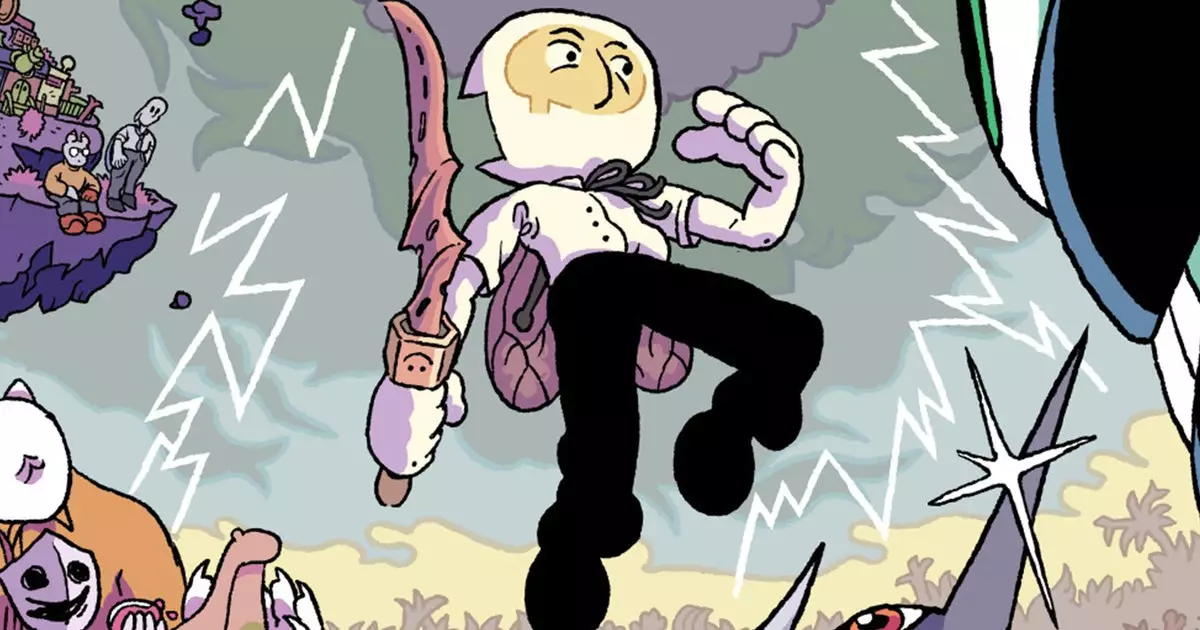In a gaming landscape dominated by genre-drenched releases, finding titles that defy conventions is both rare and invigorating. Blanksword stands out as a daring experiment blending the unforgiving mechanics of roguelike gameplay with the narrative depth and visual style reminiscent of indie icons like Hylics and OFF. This eclectic fusion showcases a developer’s commitment to originality while challenging traditional genre boundaries. Rather than a mere gimmick, this combination offers players an experience where randomness and storytelling intertwine, making each run a journey not just of survival, but of uncovering profound, surreal truths.
The game’s premise is inherently intriguing: you play as Blank, an angel who has suffered a brutal head injury that erased his memories. Miraculously surviving an impossible injury, Blank now roams a strange archipelago under the dominion of a deity called “Literally God.” This setup promises an evocative blend of mythic symbolism and existential inquiry, emphasizing the importance of uncovering identity amidst chaos. What makes Blanksword truly compelling is how it embraces its artistic inspirations, most notably OFF, a game renowned for its minimalist yet haunting aesthetic, credited here through the involvement of Mortis Ghost. The synergy between visionaries behind OFF and the creators of Blanksword hints at a rich, layered universe where storytelling, art, and gameplay are inseparable.
Mechanics That Challenge Convention and Stimulate Creativity
At its core, Blanksword is a turn-based RPG that invites experimentation and strategic thinking. The mechanics are designed to evolve with each player’s journey — new moves are acquired, and equipment is swapped out, ensuring no two runs are identical. This variation is particularly significant given the roguelike foundation; the procedural element demands adaptability and foresight from players, elevating the experience beyond repetitive grinding. The promise of hundreds of moves hints at deep combat customization, tempting players to discover which combinations best suit their playstyle.
What elevates Blanksword from typical RPG fare is its inventive approach to character progression. Lacking a brain, Blank collects “Angel Brain Parts,” each instilling distinct skills or personality traits — from intimidating enemies with heckles to enhanced sensory perception. The mechanic is not merely functional but symbolic, representing the fragmented nature of identity and memory. Imposing restrictions on how many brain parts can be active at once introduces a thoughtful layer of resource management, turning each decision into a meaningful one. Such design choices demonstrate a developer’s intent to make gameplay reflect the narrative themes of reconstruction and self-discovery.
Ambitious Artistic Direction and Community Engagement
Beyond mechanics, Blanksword’s visual and narrative design is poised to carve out a distinct identity within the indie scene. With Mortis Ghost’s involvement providing key art and potentially designing areas contingent on crowdfunding success, the game’s aesthetic promises to be both captivating and unsettling. The game’s surreal visuals, emphasizing abstract forms and haunting environments, align perfectly with its thematic focus on memory loss, identity, and divine intrigue.
The recent Kickstarter announcement and the accompanying demo on Steam reveal a transparent development process, inviting community involvement at an early stage. This openness fosters a sense of ownership among potential players, who may influence the final product through their support. While the projected release window is conservatively set for 2027, the momentum generated by early funding and positive impressions could accelerate development. The combination of an evocative art style, innovative gameplay mechanics, and dedicated community engagement positions Blanksword as a potential cult classic in the making.
In essence, Blanksword represents a rare kind of indie game that dares to forge its own path. Its integration of roguelike unpredictability with the contemplative, symbolic storytelling of artistic adventures marks it as a noteworthy experiment—one that could reshape how we approach hybrid genres and narrative-driven gameplay. The pursuit of that integration, along with talented artistic collaboration, hints at a game that not only entertains but also leaves a lasting impression on those willing to explore its surreal depths.

